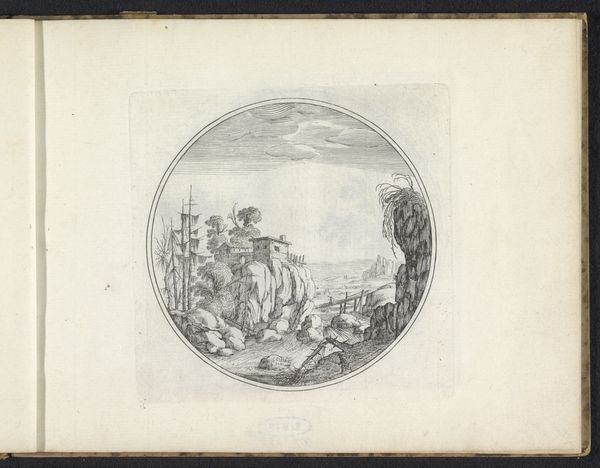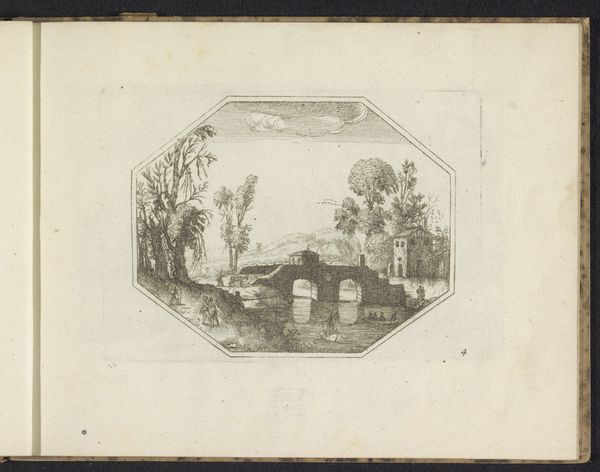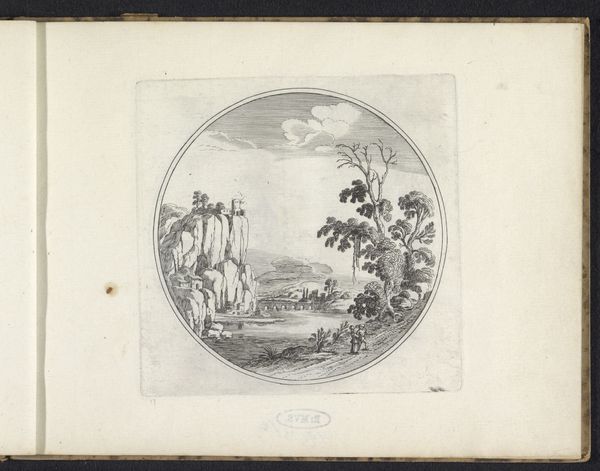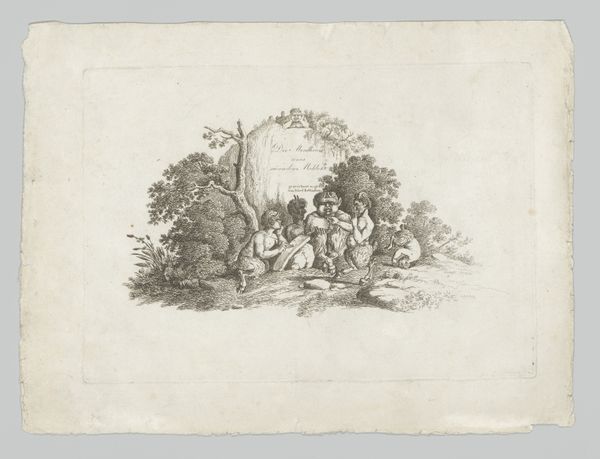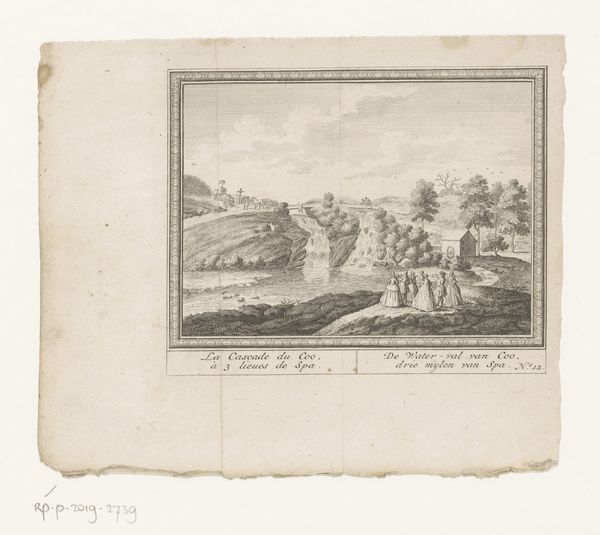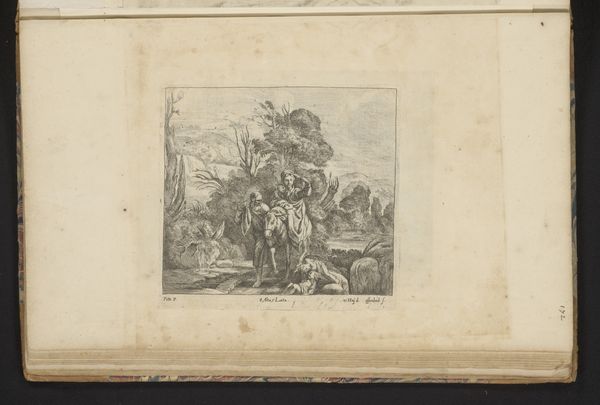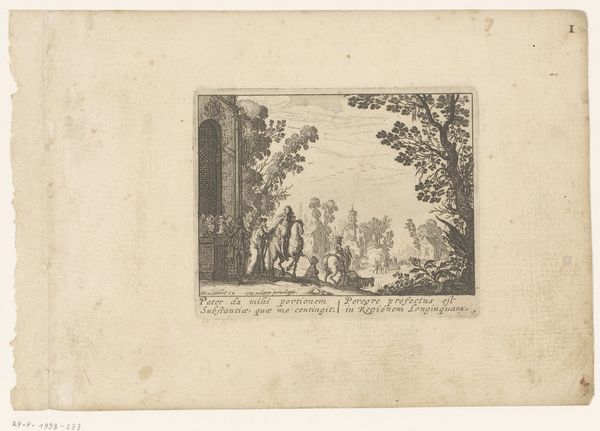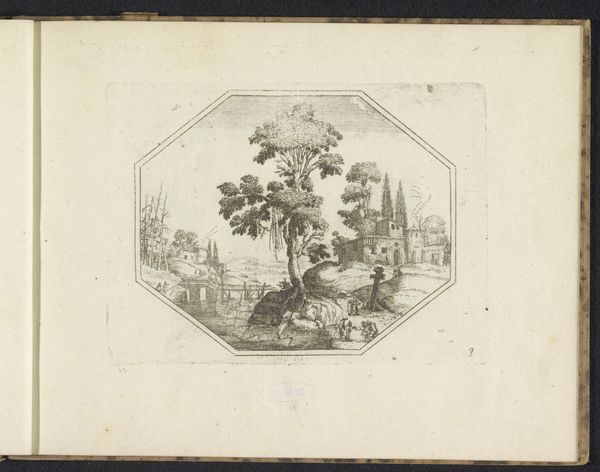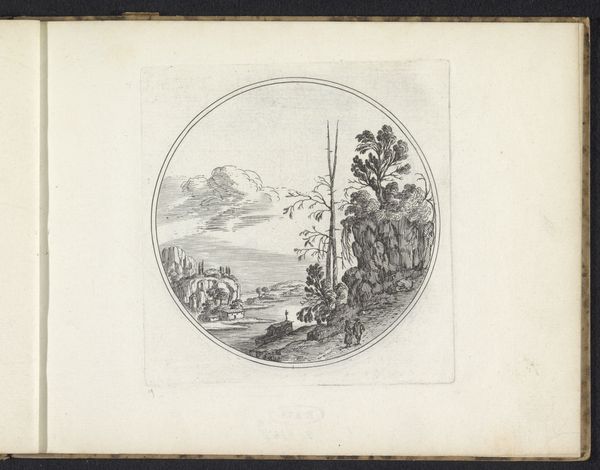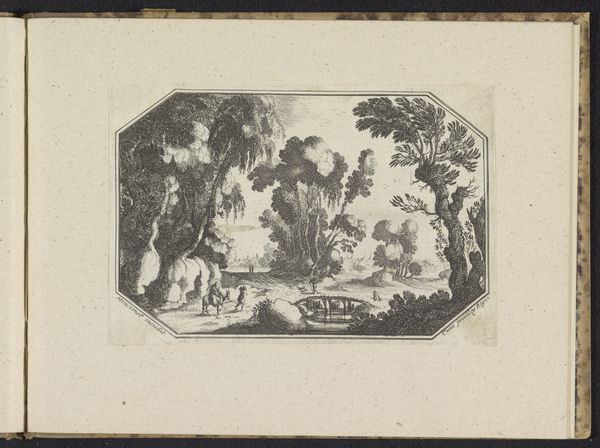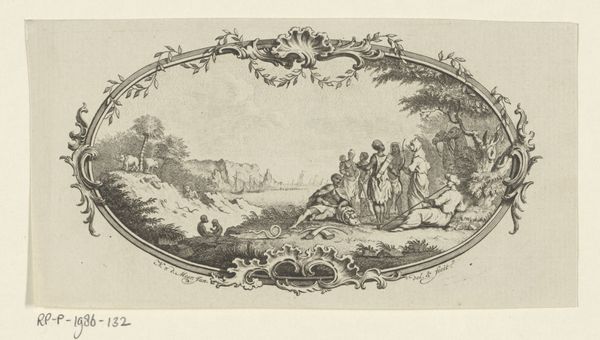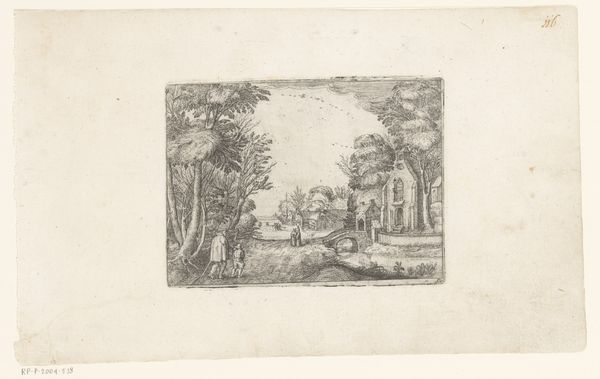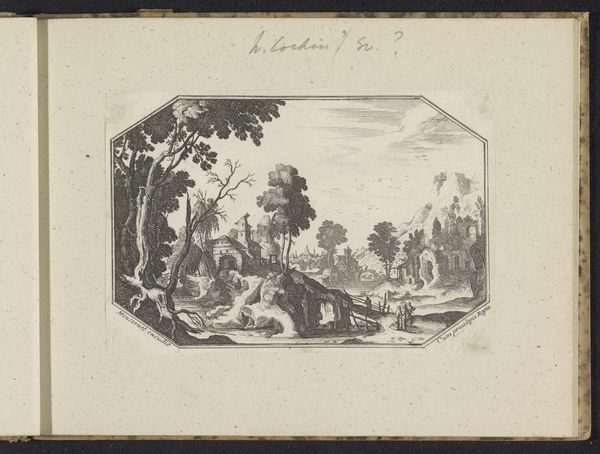
drawing, print, etching, paper
#
drawing
#
baroque
# print
#
etching
#
pencil sketch
#
landscape
#
paper
#
coloured pencil
#
sketchbook drawing
#
watercolour illustration
Dimensions: height 93 mm, width 125 mm
Copyright: Rijks Museum: Open Domain
Editor: Here we have an etching titled "Landschap met een gebouw op een rots," or "Landscape with a building on a rock," created after 1626 by an anonymous artist. The scene, rendered in delicate lines, seems almost theatrical in its arrangement. What strikes you about this landscape, Professor? Curator: The theatricality you noted is interesting. Landscapes, particularly during the Baroque period, weren't just depictions of nature; they were often reflections of societal anxieties and power structures. Given that this piece lacks an identified artist, consider its potential function: Was it created for public consumption, or was it a more private exercise? Editor: That's a good question. It feels too detailed for something quick. It's got an octagonal border, as if it were part of a series, perhaps? The detail on the building makes me think someone lived there; do you think that adds another layer to the societal commentary? Curator: Precisely! The presence of the building perched atop this rocky precipice evokes notions of dominion over nature. The etching itself, as a print, makes the landscape accessible, but think about who had access. Prints democratized art in a way, but distribution was controlled by specific socio-economic networks. Do you notice any particular symbols? Editor: I notice a few people; they are traveling but seem really small against the dramatic rock formation, which now reads almost as an endorsement of a "natural" social order. I suppose. Curator: Yes, consider the social hierarchy, visually reinforced. Landscape becomes a stage on which social and political dramas unfold, right? And how does this change your impression now? Editor: It makes me think about the viewer, about who might have looked at this, about class divides... Thank you, I'm certainly seeing it from a totally different angle. Curator: And I'm considering what stories these 'anonymous' artists truly wanted to share through such compelling pieces.
Comments
No comments
Be the first to comment and join the conversation on the ultimate creative platform.
